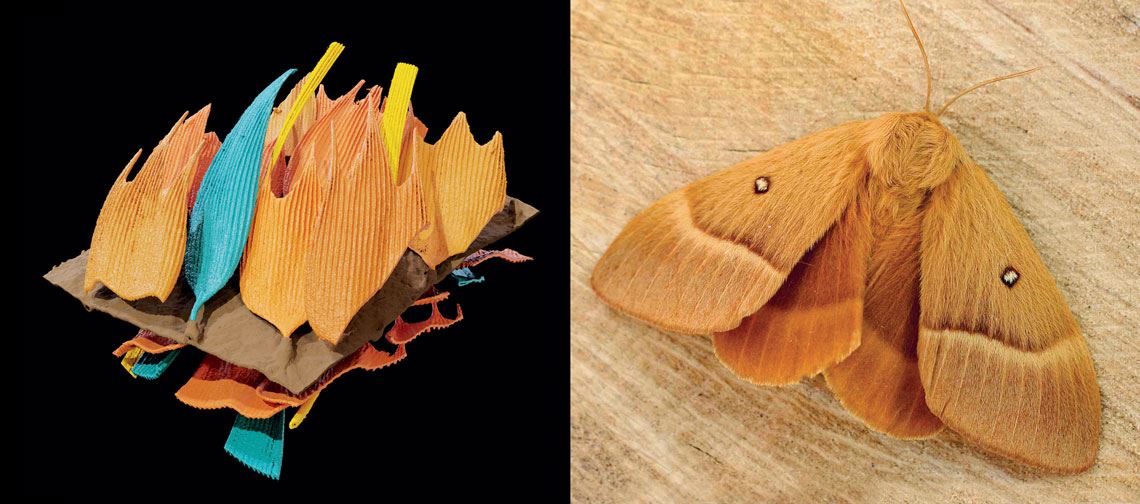Microscopic structures on the scaled wings of two moth species (Antheraea pernyi from China and Dactyloceras lucina from Africa) are able to absorb many of the ultrasound waves emitted by bats—their main predators—according to researchers from the University of Bristol, UK (PNAS, December 8). During their nocturnal hunts, bats emit ultrasonic screeches and hisses. The sound waves hit the bodies of their prey and bounce back to the ears of the winged mammals, allowing them to locate their dinner. The Bristol team, led by acoustic biologist Marc Holderied, found that the scales on the moths’ wings vibrate and dampen the ultrasonic waves—each scale is 1 millimeter long and 200 micrometers thick. Together, the tens of thousands of scales absorb more ultrasound than the sum of their parts, muffling a frequency range between 20 kilohertz (kHz) and 160 kHz and creating an audio camouflage that makes it difficult for bats to locate them. The newly discovered nanostructure could inspire the development of new noise-reducing materials.
RepublishZoology
Sound absorbing wings

Three-dimensional representation of the scales on a moth’s wing (left) and Antheraea pernyi specimen (right)
Simon Reichel, Thomas Neil, Zhiyuan Shen, and Marc Holderied | Wikimedia Commons
